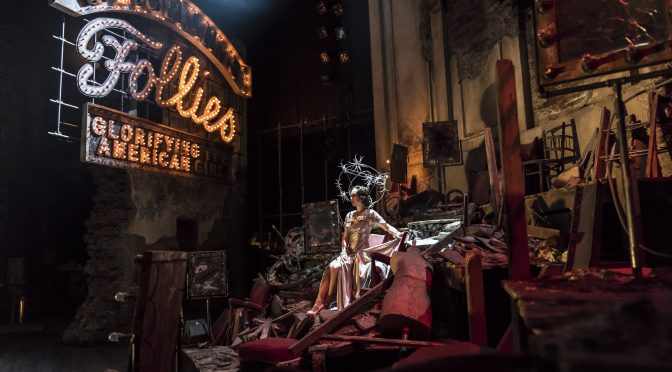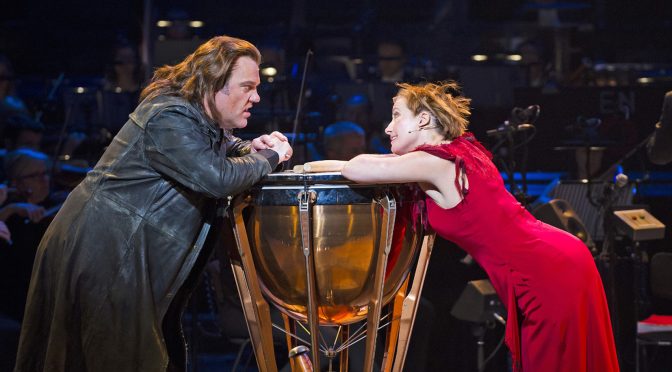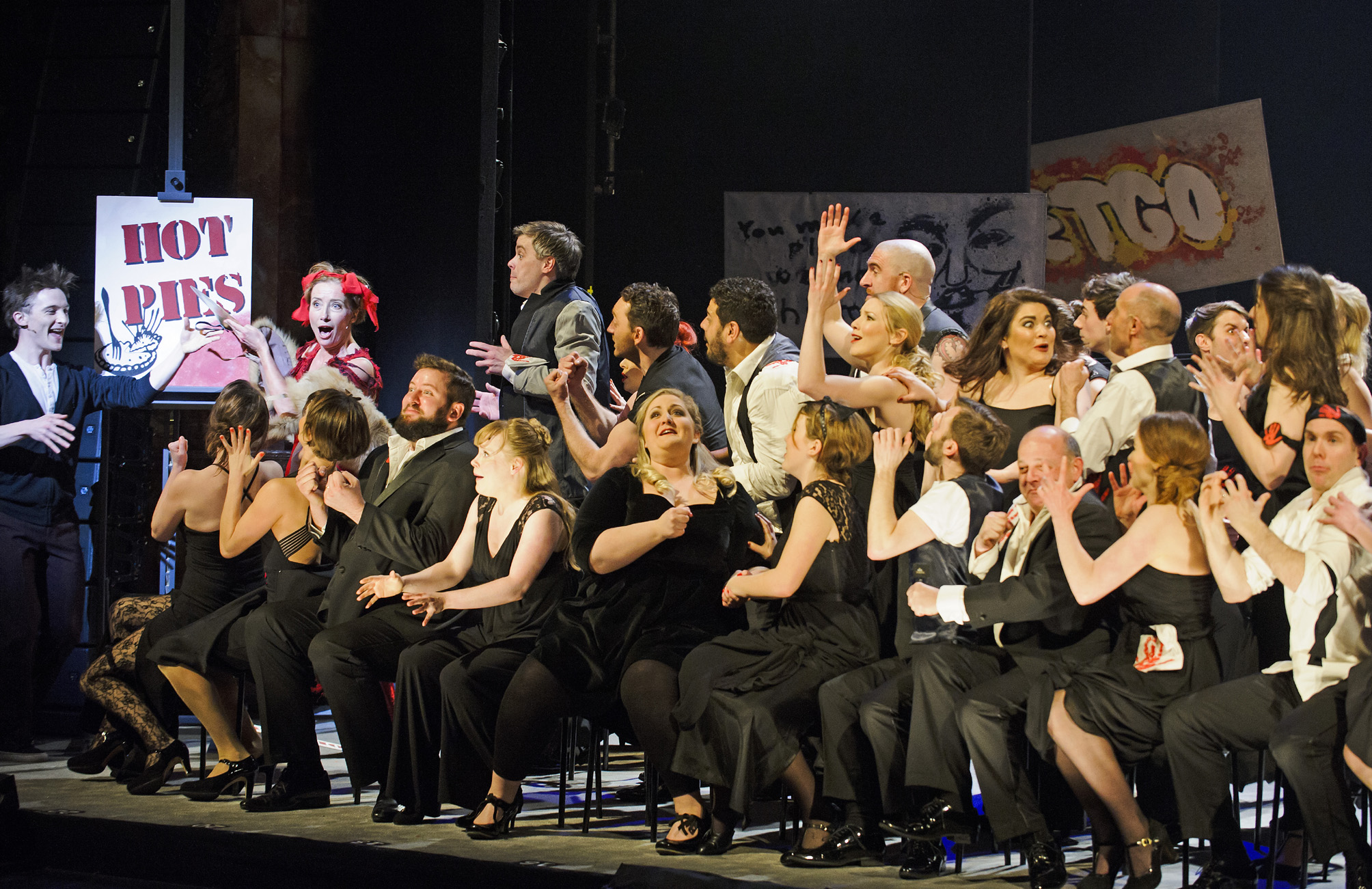This lavish production of Stephen Sondheim’s 1971 musical is a triumph for director Dominic Cooke. This is a piece that divides opinion. While its songs have gained fame, the rambling story of past lives, set around a reunion of former Broadway performers, has too slender a book by James Goldman. But in Cooke’s hands this feast of melancholic nostalgia is coherent and compelling. With no small help from the Olivier’s revolve, a static story is made to at least feel dynamic. The tone is serious, suitably so, with any camp fiercely controlled. The cast is huge, the orchestra lush and Vicki Mortimer’s design will surely garner her an award for the costumes alone. The ‘ghosts’ of lives past appear with a gorgeous array of headgear, while the late 1960s costumes of those meeting one last time before a theatre is demolished are just as meticulous and impressive.
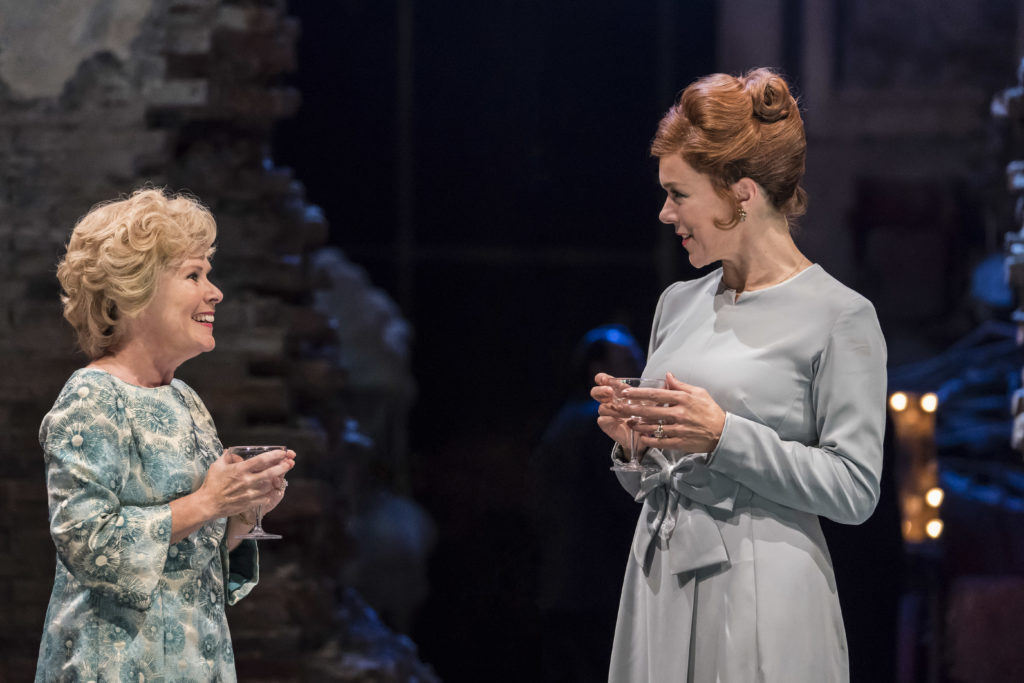
Follies provides the irony of performers at the top of their game pretending that their careers are over. Imelda Staunton continues her reign as Queen of Musicals by playing Sally and is matched by Janie Dee as Phyllis. The women performed and dated together but have ended up in sad marriages with the wrong men. Sharing their unhappiness are the husbands, Ben and Buddy, brilliantly performed by Philip Quast and Peter Forbes respectively. The women have the stronger numbers. Staunton delivers the hit Losing My Mind impeccably and her hysterical devotion to the man who got away manages against all odds to be convincing. Dee is the wicked witch of the piece, getting the laughs and showing the emptiness of her character’s successful life with pathos. But of all the mid-to-late-life crisis on offer here (and there’s plenty of it) Phyllis is the only one that entertains. There’s young talent in the show, too: Adam Rhys-Charles and Fred Haig both do well as the immature versions of the men but, while Zizi Strallen and Alex Young ably perform their roles as the younger women, the parts themselves are frustratingly thinly written.
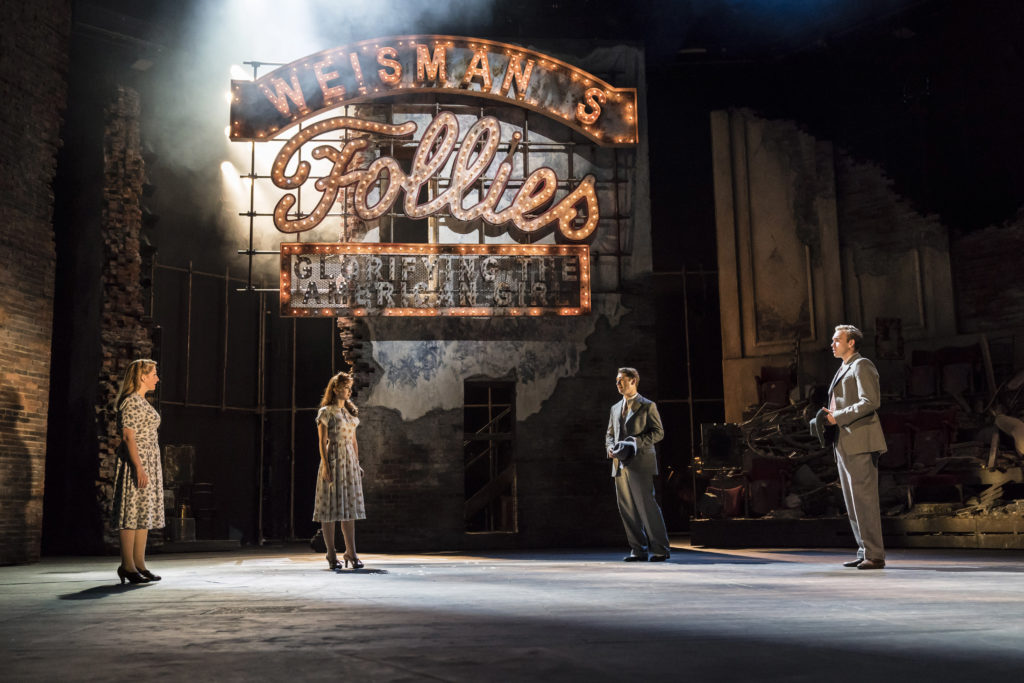
Given its size, Follies is a major investment to stage – a concert production was my only experience so expectations were high. To say this isn’t Sondheim’s best work still makes it head and shoulders above most musicals. But some of the lyrics are strangely flat and a couple of numbers, which take us back the early days of Broadway, of primarily academic interest. It’s the book that causes most problems – much of the show is a series of introductions – that fail to excite – about characters not met again. It’s a poor build up to a prolonged conclusion – the central quartet’s individual “follies” numbers that feel like ground already trodden. The stakes simply aren’t high enough to truly engage and the characters’ angst start to look like whinging. Musicals can cover serious topics – nobody proves that better than Sondheim – but here we just have a collection of personal crises that ends up dispiriting.
Until 3 January 2018
Photos by Johan Persson

